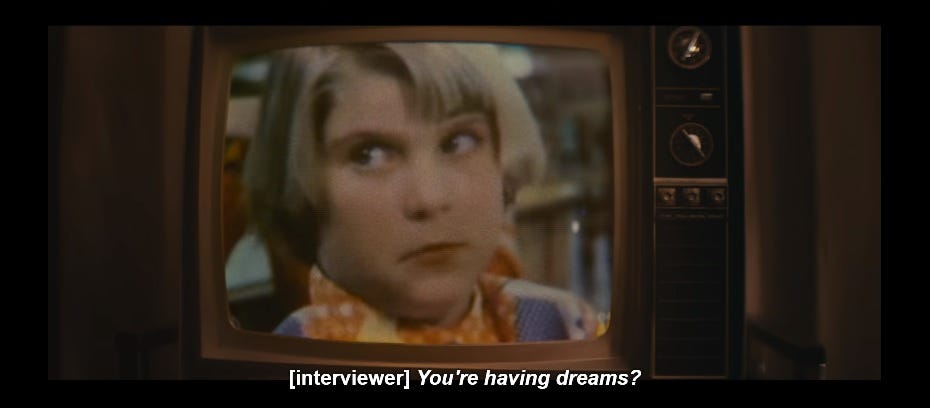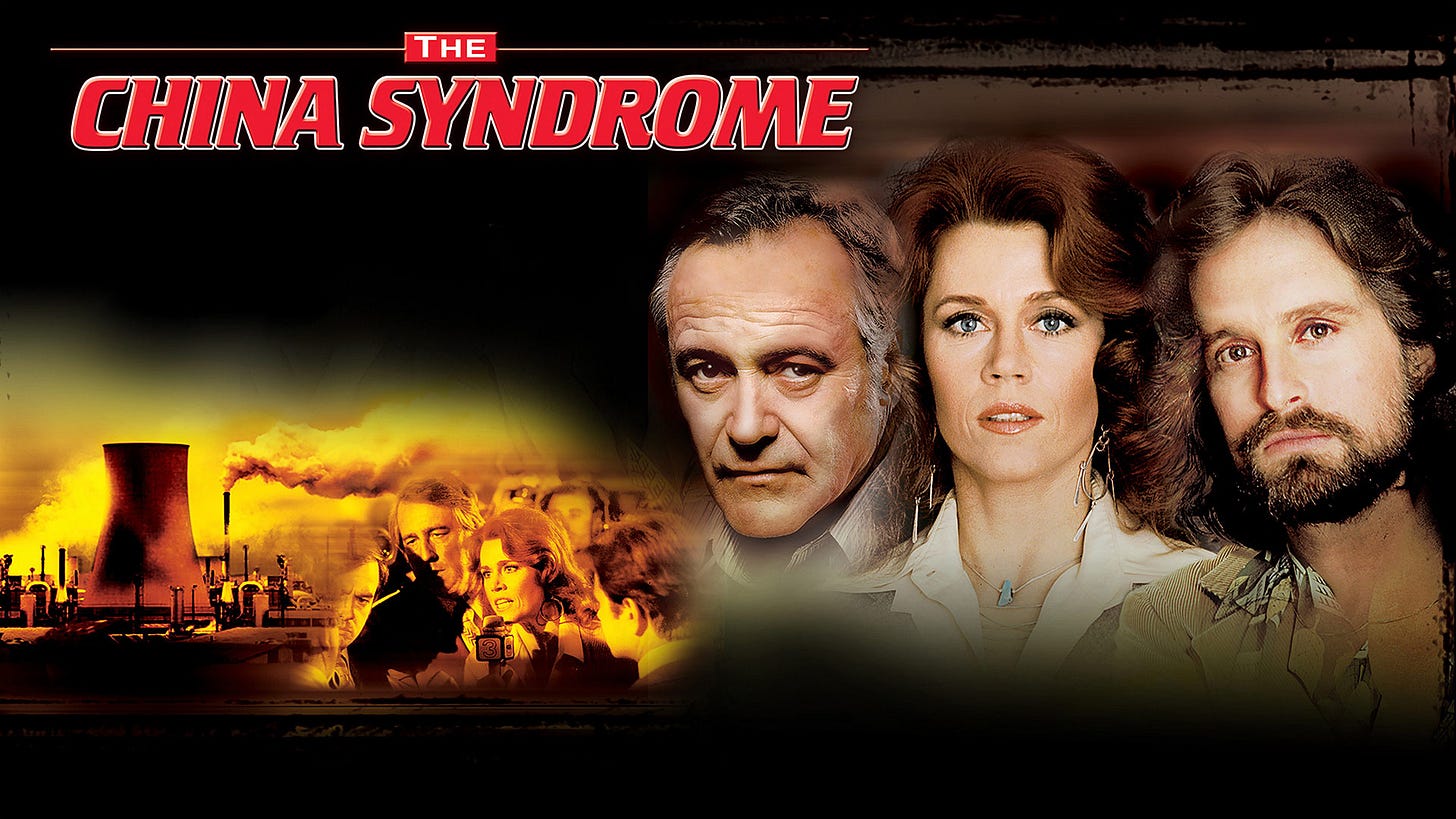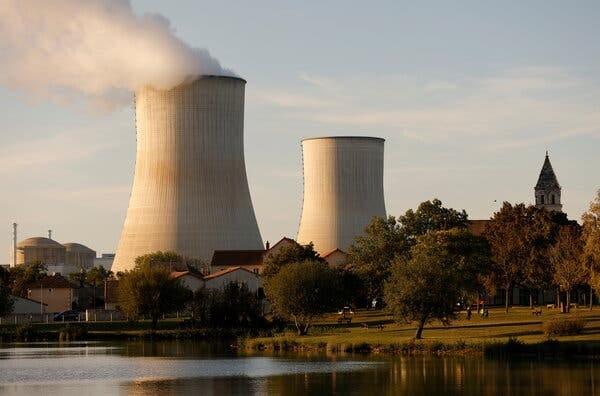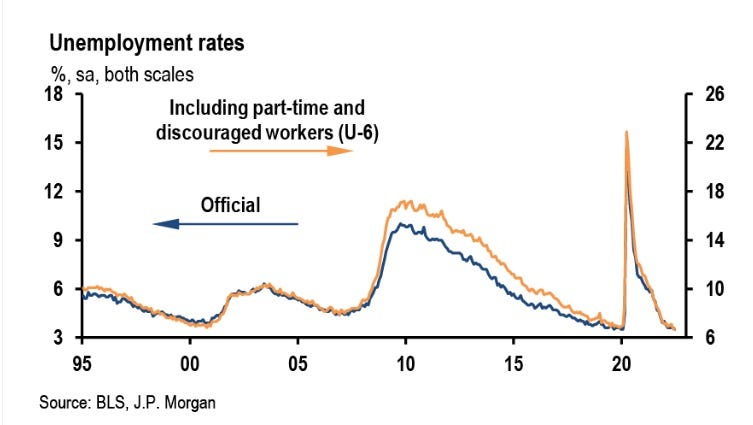Can the Global Nuclear Renaissance Survive a Big Accident?
August 05, 2022
By James Pethokoukis

Item: In a panel discussion at the United Nations on Tuesday, a collection of nuclear energy leaders from around the world gathered to discuss why it’s so critical that the industry work together to ensure gold-standard safety measures are adopted everywhere. Demand for advanced nuclear reactors will be worth about $1 trillion globally, said U.S. Secretary of Energy Jennifer M. Granholm, according to an estimate from the Department of Energy. That includes the jobs to building those reactors and all the associated supply chains that will need to ramp up to support the industry. “Bottom line is spreading advanced nuclear energy is a priority for us,” Granholm said. “Of course, these technologies all have to begin and end with nuclear safety and security.” A nuclear accident anywhere has the potential to upset the most major momentum the nuclear industry has had in decades. – “Nuclear power is on the brink of a $1 trillion resurgence, but one accident anywhere could stop that momentum” – CNBC, 08/03/2022.
My skepticism about Meltdown: Three Mile Island, a new four-part, Netflix documentary about the worst nuclear accident in US history, unfortunately began about 30 seconds into the first episode. Check out this opening sequence, an interview with a scared little boy from Middletown, Penn. — where TMI was located — that was apparently conducted right around the time of the March 1979 incident:




There’s a lot of this sort of thing in Meltdown, archival and current interviews with the survivors talking about their fears. Of course, “survivors” is maybe a sub-optimal word since there were no casualties from the accident apart from the US nuclear industry. And given that inconvenient reality, the filmmakers had to pair all that ominous music with lots of in media res speculation from panicked residents of the town.
But my initial skepticism wasn’t fully confirmed until I realized that one of the villains of the piece, in addition to plant operator Metropolitan Edison, is President Jimmy Carter, who, according his official biography, “took graduate work at Union College in reactor technology and nuclear physics and served as senior officer of the pre-commissioning crew of the Seawolf, the second nuclear submarine.” His visit to TMI during the crisis is narrated and given a caustic interpretation by whistleblower Rick Parks who contends a much worse accident was narrowly avoided:
When President Carter got there, everything was pretty much still in a state of chaos. There was a potential that the hydrogen bubble was gonna’ blow up. But with the president showing up at Three Mile Island — that reinforced to the nuclear industry that “Hey, you know, guys, I’m kinda on your side here” and showing everybody “Nuclear is not bad.”
But the filmmakers think nuclear is kind of bad. Later on, they use an anti-nuclear activist as their avatar to conclude that the investigation conducted by Carter’s presidential commission on the TMI accident was a “whitewash.” That scene is then followed by footage of Carter suggesting the report was a serious inquiry, and “we cannot shut the door on nuclear power for the United States.”

Jimmy Carter and nuclear energy
Although the documentary is eager to make Carter a shill for Big Atom, the president seems to have both genuinely believed that nuclear needed to be part of the nation’s energy portfolio and that people were wildly overreacting. The release just two weeks earlier of The China Syndrome, a Hollywood thriller about a cover-up of a near-disaster at a nuclear plant, surely played a role in public perception. The phrase “China Syndrome” — where a nuclear core melts down through the Earth — was repeatedly used by reporters at TMI press conferences. This from a 20-year retrospective on TMI from The Washington Post:
Among the factors that fed into the decision making [for the president to visit Three Mile Island] was Carter’s belief that the media had exaggerated the dangers and had unduly alarmed the public. In his autobiography, Carter had written of his “confidence in the safety of the reactors which we studied and operated.” He did not like to see that confidence shaken by others less informed than he. … On April 6, Carter discussed his trip with a group of editors at the White House. “… I felt perfectly safe last Sunday when I was in the control room just a hundred feet away from the reactor core itself. The level of radiation was carefully monitored even before they found out the president was coming.”
Meltdown (which really should have been named Partial Meltdown for accuracy) concludes with a video montage of the 2011 Fukushima nuclear disaster and then gives whistleblower Parks the final word: “I still believe in the promise of nuclear energy. But we’ll never have a viable nuclear energy industry in this country until we take the profit motive out of it. You can’t have a profit motive overriding nuclear safety.”
It’s a remarkable way to end this documentary series when you consider the following:
- By far the worst nuclear disaster was Chernobyl in Ukraine, where the confirmed death toll is less than 100, according to Our World In Data. And while the original estimates for cancer risk to the region were as high as 60,000 potential fatalities, it’s now unclear that radioactivity exposure posed any risk at all. Two points here: First, even the worst nuclear accident — one with an explosion that left the core exposed — didn’t kill hundreds or thousands, although the otherwise excellent HBO mini-series on the disaster suggested just such an outcome at various points. Second, there was no profit motive involved with the reactors built and operated by the Soviet Union.
- Any hope for a future where nuclear power plays a bigger role in the energy mix depends in large part on the private sector. As that CNBC piece notes, “Future nuclear reactors and plants will almost certainly use different technology from the current standard, as both U.S. labs and private companies are funding research into more efficient reactors that are cheaper to build and generate less waste.” Venture funding for startups focusing on nuclear energy reached $3.4 billion in 2021 vs. $381 million in 2020 and only $131 million back in 2012, according to Bloomberg. Profit motive is part of the solution here.
- Speaking of Fukushima, the 2019 paper “Be Cautious with the Precautionary Principle: Evidence from Fukushima Daiichi Nuclear Accident” looks at the unintended effects of Japan ceasing operation of all nuclear power stations after the accident. (No one died during the disaster, one worker died in 2018 due to lung cancer related to the accident, and follow-up studies have found “there appears to be no increased risk of cancer or other radiation-related health impacts, notes OIWD.) Researchers found that replacing nuclear power in Japan with more expensive fossil fuels led to higher energy prices and a reduction in energy consumption, “which caused an increase in mortality during very cold temperatures” and “contributed to more deaths than the accident itself.” Overall, there were an additional 1,280 deaths from 2011 through 2014. And because the data only cover the 21 largest cities in Japan, about a quarter of the total population, the total effects for all of Japan are almost assuredly even larger.
- Similarly, the NBER working paper “The Private and External Costs of Germany’s Nuclear Phase-Out” looked at the post-Fukushima decision by Germany to immediately shut down almost half of the country’s nuclear power plants and plan for a shut down all of the remaining nuclear power plants by 2022. From the paper: “Our analysis indicates that the phase-out of nuclear power comes with an annual cost to Germany of roughly $12 billion per year. Over 70% of this cost is due to the 1,100 excess deaths per year resulting from the local air pollution emitted by the coal-fired power plants operating in place of the shutdown nuclear plants. Our estimated costs of the nuclear phase-out far exceed the right-tail estimates of the benefits from the phase-out due to reductions in nuclear accident risk and waste disposal costs.”
- Which brings us back to TMI. As with Japan and Germany there were significant unintended consequences from the policymaker reaction to the nuclear accident, such as increased regulator scrutiny. This from “Impacts of nuclear plant shutdown on coal-fired power generation and infant health in the Tennessee Valley in the 1980s” by Carnegie Mellon University economist Edson Severnini: “After the Three Mile Island accident in 1979, the US Nuclear Regulatory Commission intensified inspections throughout the nation, leading to the shutdown of two large nuclear power plants in the TVA area. In response to that shutdown, electricity generation shifted one to one to coal-fired power plants within TVA, increasing particle pollution in counties where they were located. Consequently, infant health may have deteriorated in the most affected places, indicating deleterious effects to public health.”
Anti-nuclear activists are losing everywhere
But would any of the above analysis and data make a difference if there was a major nuclear accident, especially given a creative culture that continues to churn out anti-nuclear content such as Meltdown? Would a “nuclear accident anywhere” really stop the current momentum, as the CNBC story suggests?
I no longer think so, thanks to the shock of soaring prices for oil and gas, as well as the growing realization that to reduce carbon emissions, we need the sort of flexible and abundant power supply that solar and wind can’t give us. As The New York Times recently reported: “European countries desperate for a long-term and reliable source of energy to help reach ambitious climate goals are turning to an answer that caused earlier generations to shudder: nuclear power.” France, the UK, the Netherlands, and Poland all plan to build new reactors.

Then there’s the big reversal by Japan and Germany. First Japan, via Bloomberg:
Japanese Prime Minister Fumio Kishida said he asked for as many as nine nuclear reactors to be online this winter to help with an expected power crunch. … Japan is struggling with tight electricity supplies due to extreme weather, the retirement of older power plants, and delays to restarting nuclear reactors that were shut following the Fukushima nuclear disaster in 2011. It is also cutting its use of energy sources from Russia following its invasion of Ukraine. … Ten of Japan’s 33 operable nuclear reactors had been restarted under post-Fukushima safety rules, though some are offline for maintenance. A further seven units have been cleared by the nation’s nuclear regulator to resume operations but haven’t yet restarted due to required upgrades or lack of local support.
And Germany, via the WSJ:
German Chancellor Olaf Scholz said for the first time that his government could postpone the planned closure of its remaining nuclear reactors, as he criticized a decision by Russia to constrain gas flows to Germany—a move that could deal a severe blow to Europe’s largest economy. … On Tuesday, the chancellor broke with a longstanding policy and said for the first time that it “could make sense” to keep Germany’s last three nuclear reactors online. They are due to be shut down in December as part of the country’s transition to renewable energy. … Around 70% of Germans are now in favor of extending the life of nuclear reactors, according to an Insa poll from last week.
Geopolitical risk and climate change are pro-nuclear, action-forcing mechanisms that are here to stay. What’s more, my reading of Wall Street research on the nuclear sector provides reassurance that investors are taking a nuclear future quite seriously, both fission and fusion. Maybe get ready for a new documentary: Meltdown: The collapse of global resistance to nuclear power. Sorry, “elemental power!”
Micro Reads
▶ June Jobs: Overcooked jobs market to prompt more Fed action – Michael Feroli, JPMorgan | The July jobs report blew the doors off expectations, as nonfarm employment increased by 528,000 and the unemployment rate ticked down to 3.5%, the lowest in over a half century. Today’s numbers should mollify recession fears but amplify concerns that the Fed has a lot more work to do, and we now think a 75bp hike in September looks likely. … The only disappointing detail of the July numbers was the tick down in the participation rate to 62.1%). …It’s still early days, but we continue to pencil in 1.0% for 3Q GDP growth; unless that tracking is revised up substantially we could be in for another challenging quarter for both productivity growth and corporate profit growth. … While last month’s tick down in the participation rate was due to teenagers, on a trend basis the improvement in the prime-age participation rate appears to have stalled over the last six months. Even with the move down in participation, the employment-to-population ratio ticked up last month to 60.0%. The U-6 broad measure of labor market underutilization was unchanged at 6.7%, an all-time low dating back to the start of the series in 1994.

▶ Drug Discovery Is About to Get Faster. Thank AI. – Lisa Jarvis, Bloomberg | AlphaFold’s pictures can help drugmakers get to the testing stage faster. DeepMind’s feat may have taken several years of scientific exploration, but it produced something with truly monumental consequences. And it made that work freely available. (Of course, it has also launched its own biotech company, Isomorphic Labs, to take a stab at capitalizing on the advances.) Finally, we are getting a glimpse of AI’s potential to transform the drug industry. And now it’s possible to consider which problems machine-learning might solve next for science and medicine.
▶ Amazon acquires Roomba maker iRobot for $1.7bn – Cristina Criddle, James Fontanella-Khan, and Antoine Gara, Financial Times | IRobot’s Roomba is one of Amazon’s best-selling robot vacuums. The devices are trained to avoid walls, cables and pet waste, a common complaint among users of earlier models of the Roomba. On completion of the deal, Colin Angle will remain the chief executive of iRobot. “We know that saving time matters, and chores take precious time that can be better spent doing something that customers love,” said Dave Limp, senior vice-president of Amazon Devices.
▶ Here Comes the Sun—to End Civilization – Matt Ribel, Wired | To a photon, the sun is like a crowded nightclub. It’s 27 million degrees inside and packed with excited bodies—helium atoms fusing, nuclei colliding, positrons sneaking off with neutrinos. When the photon heads for the exit, the journey there will take, on average, 100,000 years. (There’s no quick way to jostle past 10 septillion dancers, even if you do move at the speed of light.) Once at the surface, the photon might set off solo into the night. Or, if it emerges in the wrong place at the wrong time, it might find itself stuck inside a coronal mass ejection, a mob of charged particles with the power to upend civilizations. .. When another big one heads our way, as it could at any time, existing imaging technology will offer one or two days’ notice. But we won’t understand the true threat level until the cloud reaches the Deep Space Climate Observatory, a satellite about a million miles from Earth. It has instruments that analyze the speed and polarity of incoming solar particles. If a cloud’s magnetic orientation is dangerous, this $340 million piece of equipment will buy humanity—with its 7.2 billion cell phones, 1.5 billion automobiles, and 28,000 commercial aircraft—at most one hour of warning before impact.

▶ This startup wants to copy you into an embryo for organ harvesting – Antonio Regalado, MIT Tech Review | In a search for novel forms of longevity medicine, a biotech company based in Israel says it intends to create embryo-stage versions of people in order to harvest tissues for use in transplant treatments. The company, Renewal Bio, is pursuing recent advances in stem-cell technology and artificial wombs demonstrated by Jacob Hanna, a biologist at the Weizmann Institute of Science in Rehovot. Earlier this week, Hanna showed that starting with mouse stem cells, his lab could form highly realistic-looking mouse embryos and keep them growing in a mechanical womb for several days until they developed beating hearts, flowing blood, and cranial folds. It’s the first time such an advanced embryo has been mimicked without sperm, eggs, or even a uterus. Hanna’s report was published in the journal Cell on Monday.
▶ Economists’ models miss the gains from more women in the workforce – Jonathan Ostry, Financial Times | There is a range of microeconomic evidence, however, suggesting that female and male workers are not perfect substitutes in production. For example, financial performance (profits, stock market valuations) of large companies and banks has been shown to improve when women are brought into previously male-dominated management teams and oversight boards. Some studies attribute this effect on performance to different attitudes toward risk and collaboration, as just two possible channels. As a former senior Federal Reserve official noted, the models researchers use to understand the macroeconomy are gender-blind, as if macroeconomic policies affect women the same as men. Increasingly, these look out of touch with reality.
Sign up for the Ledger
Weekly analysis from AEI’s Economic Policy Studies scholars


